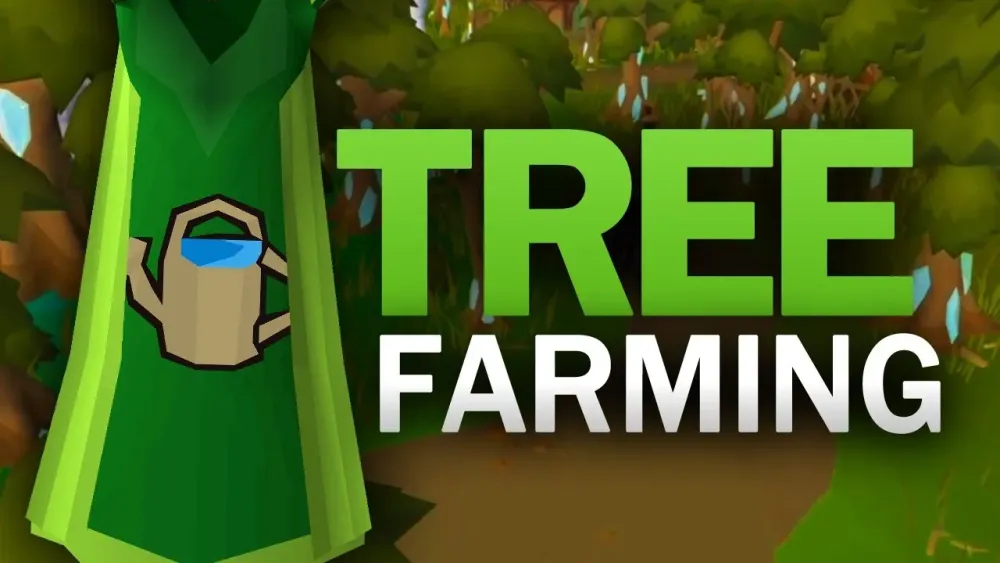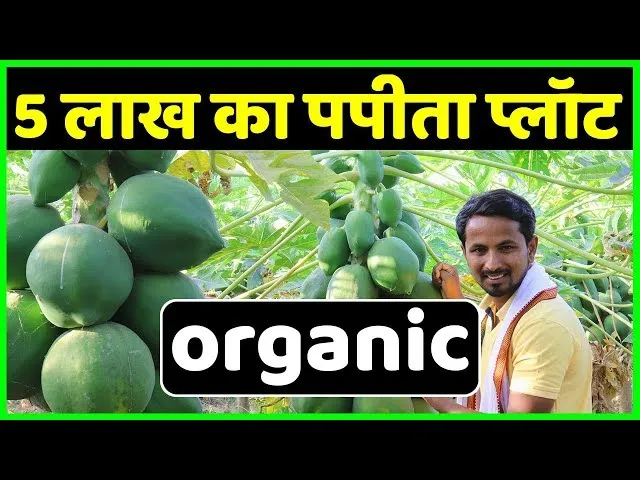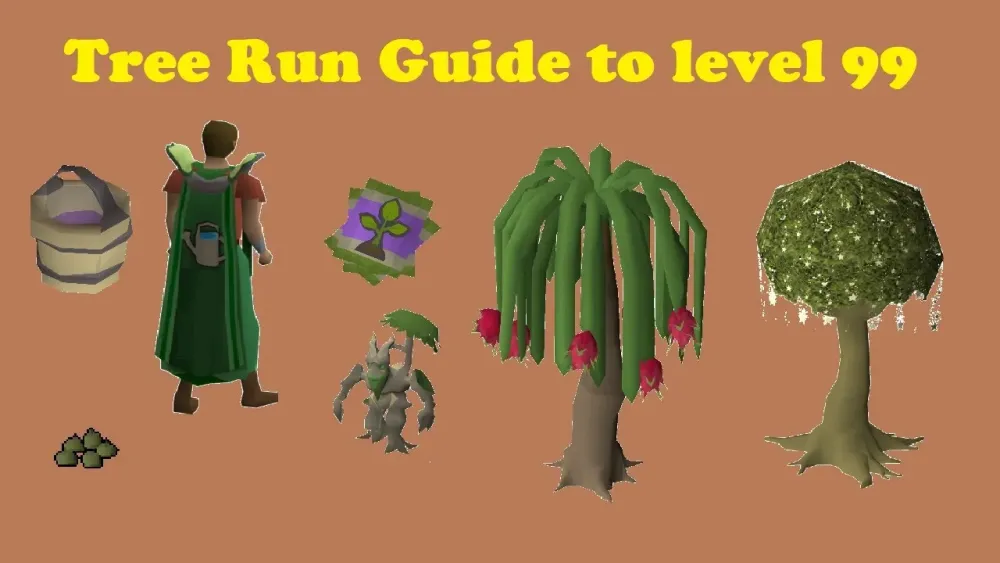Your cart is empty
How to Train Farming in OSRS: A Comprehensive Guide

Farming in Old School RuneScape (OSRS) is a vital skill that allows players to grow their own crops, herbs, and trees while providing a source of income and resources for various activities. This guide aims to equip you with the knowledge needed to excel in Farming, from understanding its mechanics to optimizing your farming methods. Whether you are a novice or an experienced player, mastering this skill can significantly enhance your gameplay experience.
To embark on your Farming journey in OSRS, you need to meet certain prerequisites that will set the foundation for your success. First and foremost, you must complete the quest “The Garden of Tranquility” to unlock access to various farming patches located throughout Gielinor. This quest is essential as it introduces you to key farming mechanics and grants you valuable experience.
Next, familiarize yourself with the farming patches available across the game. These patches include allotment patches for vegetables, herb patches for herbs, and tree patches for fruit and hardwood trees. Knowing the locations of these patches will help you plan your farming activities effectively. You can find allotment patches in places like Falador and Ardougne, while herb patches are located in Taverley and the Hosidius House.
To start farming, you will need farming tools such as a spade, rake, and seed dibber. A spade is required for planting and harvesting crops, while a rake is essential for clearing the ground of weeds. The seed dibber allows you to plant seeds in the ground. Additionally, consider acquiring a watering can, especially for crops that require watering, like flowers and certain vegetables.
As you dive into Farming, understanding the seed types is crucial. Seeds can be obtained from various sources, including shops, monster drops, and player trades. Focus on easy-to-grow crops initially, such as potatoes and onions. These crops provide valuable experience and can be harvested quickly. As your Farming level increases, you can experiment with more complex crops, including herbs and trees that yield higher rewards.
Lastly, it is beneficial to use the Farming skill guide available in OSRS to track your progress and plan your farming goals. Regularly check your Farming level and adjust your strategy accordingly to maximize your efficiency and profits. With the right preparation and knowledge, you’ll be on your way to becoming a proficient farmer in OSRS.
3. Understanding Farming Mechanics

Farming in Old School RuneScape (OSRS) can seem daunting at first, but once you grasp the mechanics, it becomes much more enjoyable and rewarding. At its core, Farming revolves around growing crops and harvesting them for experience and profit. Here’s a breakdown of the essential mechanics you need to understand:
- Planting Seeds: You’ll need to acquire seeds for the crops you want to grow. These can be obtained from various sources like monster drops, shops, or even the Farming Guild.
- Farming Patches: Crops need to be planted in specific farming patches located throughout Gielinor. Each patch is designated for different types of crops.
- Growth Time: Each crop has a specific growth cycle. You’ll need to wait a certain amount of time before you can harvest them. Be aware that some crops can be affected by a player’s actions, like using the patch for other tasks.
- Weeds and Disease: Crops can sometimes be affected by weeds or diseases. Regularly check your patches to ensure they’re healthy. You can use gardening tools or specific items to manage these issues.
- Compost: Using compost can enhance the growth rate of your crops and reduce the chance of disease. It’s a valuable resource to have on hand.
Understanding these mechanics is crucial for maximizing your Farming efficiency. As you progress, you’ll find that managing your crops becomes second nature, allowing you to focus on growing your experience and wealth!
4. Best Crops to Grow for Experience

Choosing the right crops to grow is essential for leveling up your Farming skill efficiently. Here’s a look at some of the best crops that offer great experience and some additional benefits:
| Crop | Level Required | Experience Gained | Notes |
|---|---|---|---|
| Potatoes | 1 | 5 | Easy to grow; great for beginners. |
| Onions | 1 | 10 | Another beginner-friendly crop. |
| Sweetcorn | 35 | 10 | Useful for cooking and good experience. |
| Snape Grass | 35 | 15 | Used in potions; can be profitable. |
| Maple Trees | 45 | 100 | High experience; also provides logs for woodcutting. |
| Magic Trees | 75 | 100 | Great experience and valuable logs. |
As you can see, each crop has its unique perks. Consider your Farming level and the time you want to invest when choosing which crops to plant. Happy farming!
5. Using Farming Tools and Equipment
When it comes to training Farming in Old School RuneScape (OSRS), having the right tools and equipment can make a world of difference. This section will cover the essential tools you’ll need, as well as some useful equipment that can enhance your farming experience.
Essential Farming Tools:
- Seed dibber: This nifty tool is crucial for planting seeds. Equip it to plant seeds in patches quickly.
- Spade: You’ll need a spade for digging up patches and preparing them for planting. It’s a must-have!
- Watering can: This tool helps in watering your plants, particularly useful for certain crops that require it for optimal growth.
- Rake: Use a rake to clear patches of weeds before planting seeds. Weeds can hinder your crop’s growth!
Helpful Equipment:
- Magic secateurs: These special secateurs increase your yield by 10% when harvesting certain crops.
- Plant cure: If your crops become diseased, this item will help you treat them. It’s a great investment!
- Farming gloves: These gloves reduce the chance of your crops becoming diseased, allowing for a smoother farming experience.
Don’t forget to check your Farming level requirements for certain tools and equipment. Being prepared with the right gear will save you time and effort in the long run!
6. Training Methods: Efficient Strategies
Now that you’re equipped with the right tools, let’s dive into some effective training methods for maximizing your Farming experience in OSRS. Whether you’re a newbie or a seasoned player, these strategies will help you level up efficiently.
1. Herb Farming: This is one of the most profitable ways to train Farming. Start with low-level herbs like Guam and work your way up to high-level herbs like Ranarr. Use the following strategy:
- Plant herbs in both Falador and Ardougne patches.
- Water them with a watering can if required.
- Check for disease; if any crops are sick, use a plant cure.
- Harvest and sell the herbs for profit!
2. Tree Farming: This method gives excellent Farming XP and requires minimal maintenance. Follow these steps:
- Start planting Normal trees at level 15, then progress to Willows, Maples, and eventually Yews.
- Visit tree patches in Varrock and Gnome Stronghold.
- Use Magic secateurs to boost your yield.
3. Fruit Trees: These are another excellent way to gain XP. Start planting fruit trees as soon as you unlock them. They provide substantial XP and are relatively low-maintenance.
With these training methods and efficient strategies, you’ll find yourself leveling up your Farming skill in no time. Happy farming!
Farming Quests and Their Benefits
In Old School RuneScape (OSRS), farming quests are an essential part of your journey as they not only provide valuable experience but also unlock various farming-related rewards. Completing these quests can enhance your farming skills significantly and make your farming endeavors more efficient.
Here’s a list of some key farming quests you should consider:
- Garden of Tranquility: This quest rewards you with 2,500 Farming experience and unlocks access to the ability to grow herbs.
- My Arm’s Big Adventure: Completing this quest provides 10,000 Farming experience and gives you access to the My Arm’s patch, allowing you to grow specific herbs.
- Fairy Tale I – Growing Pains: Finish this quest to gain 2,500 Farming experience, which also unlocks the ability to use the fairy rings for faster travel.
- Fairy Tale II – Cure a Queen: This quest grants 5,000 Farming experience and more access to fairy ring teleportation, making it easier to reach farming patches.
Additionally, many farming quests come with unique benefits such as:
| Quest Name | Experience Reward | Unlocks |
|---|---|---|
| Garden of Tranquility | 2,500 | Herb farming |
| My Arm’s Big Adventure | 10,000 | My Arm’s patch |
| Fairy Tale I | 2,500 | Fairy ring access |
| Fairy Tale II | 5,000 | Enhanced fairy ring access |
These quests not only boost your farming levels but also open up new avenues to maximize your farming efficiency and profits. Always keep an eye out for farming quests that can benefit your overall game progression!
Maximizing Profit: Farming for Gold
When it comes to making gold in OSRS, farming can be one of the most lucrative skills to master. With the right strategies, you can turn your farming activities into a consistent source of income. Here are some tips to help you maximize your profits:
1. Focus on High-Value Crops: Certain crops yield higher profits than others. Consider planting:
- Herbs: Such as Ranarr and Torstol, which are always in demand for potions.
- Fruits: Like Watermelons and Pineapples, which sell well in bulk.
- Flowers: Such as Snapdragon and Lantadyme for their high market value.
2. Use Farming Contracts: Farming contracts from the Farming Guild can be an excellent way to earn extra rewards while farming. Not only do they provide you with experience, but they also help you gather seeds and other resources.
3. Efficient Farming Routes: Plan your farming trips to minimize downtime. Consider using fairy rings for quick travel between patches. For example, use the code AJS to access the herb patch near the Farming Guild.
4. Utilize Boosts: Use items like the Farming cape or the super compost to boost your yields. These can significantly increase the amount of produce you harvest.
5. Sell Smart: Be aware of the market prices. Use tools like the OSRS Grand Exchange database to track prices and sell your crops at the right time for maximum profit.
By implementing these strategies, you can turn your farming skill into a gold-making machine, providing you with the funds you need for other adventures in Gielinor!
How to Train Farming in OSRS: A Comprehensive Guide
Farming is one of the 23 skills in Old School RuneScape (OSRS) and offers players a unique way to generate income, grow food, and gather resources. This skill allows players to grow crops, raise animals, and harvest herbs. Here’s how to effectively train your Farming skill:
Getting Started
- Accessing the Farming Skill: Unlock Farming by visiting a farming patch, which can be found throughout Gielinor.
- Required Tools: Equip a spade and consider using a watering can for certain crops.
Training Methods
| Method | Experience Points (XP) | Requirements | Notes |
|---|---|---|---|
| Planting Trees | 100-800 XP | Level 15 and above | Higher levels yield more XP. |
| Harvesting Herbs | 70-140 XP | Level 1 and above | Herbs provide a steady income. |
| Farming Cacti | 200 XP | Level 40 | Cacti are often profitable. |
Advanced Training Techniques
Utilize farming contracts from the Farming Guild for rewards and experience. Consider using the Magic Secateurs to increase crop yields by 10% and the Farming Outfit for additional bonuses.
Joining a clan can also provide support and tips for efficient training methods. Keep an eye on patch timers to minimize downtime.
Conclusion: Tips for Successful Farming
To maximize your Farming skill, focus on planting a variety of crops, utilize farming tools effectively, and diversify your training methods. Always stay updated on the best practices to adapt to changes in the game.
